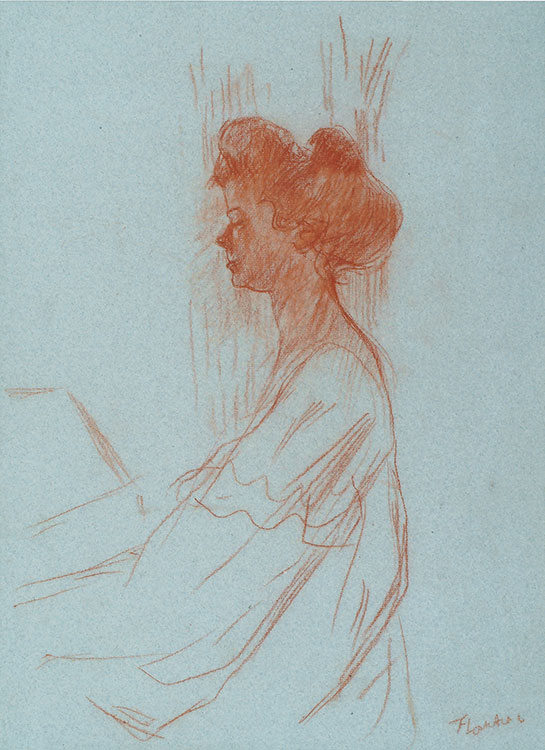
Toulouse-Lautrec’s expressive study captures the deep concentration of a musician at work. The drawing was made during an informal performance by Misia Natanson, a talented pianist and patron of the arts. Toulouse-Lautrec depicted Natanson on several occasions in different media, including a painted portrait that the artist named after Ludwig van Beethoven’s Ruins of Athens. In her autobiography, Natanson recalled that Toulouse- Lautrec “had fallen in love with Beethoven’s musical piece. I had to play it for him constantly because he claimed to draw his inspiration from it.”
Henri de Toulouse-Lautrec
French, 1864–1901
Seated Woman Looking toward the Left (Misia Natanson at the Piano), 1895
Red chalk on blue paper
Kupferstich-Kabinett, Staatliche Kunstsammlungen Dresden, INV. NO. C 1903-28
© Kupferstich-Kabinett, Staatliche Kunstsammlungen Dresden
Photo: Andreas Diesend
Ian Hicks, Moore Curatorial Fellow
Toulouse-Lautrec produced this study during an informal performance by its sitter, Misia Natanson, a talented musician and patron of the arts. Using red chalk against the mid-tone of the blue paper, the artist focused his attention on Natanson’s facial features, sensitively rendering the deep concentration they convey. Toulouse-Lautrec depicted the musician on several occasions and in different media. In her autobiography, Natonson recalled that the artist had named a painted portrait of her after Beethoven’s “Ruins of Athens.” She remembered that Toulouse-Lautrec had fallen in love with the piece, which she had to play for him constantly as he claimed to draw inspiration from it. Intimate portraits such as this can therefore be understood as deeply personal works by the artist, inspired not only by the visual world and his relationship with the sitter, but also with the music she produced during their making.
The sheet entered the Kupferstich-Kabinett’s collection as an indirect result of their acquisitions of contemporary art at the turn of the twentieth century. The drawing was one of four sheets given to the collection by the artist’s mother in 1903, two years after Toulouse-Lautrec’s death. She offered the gift in thanks to the institution for supporting her son by acquiring his works during his lifetime.
